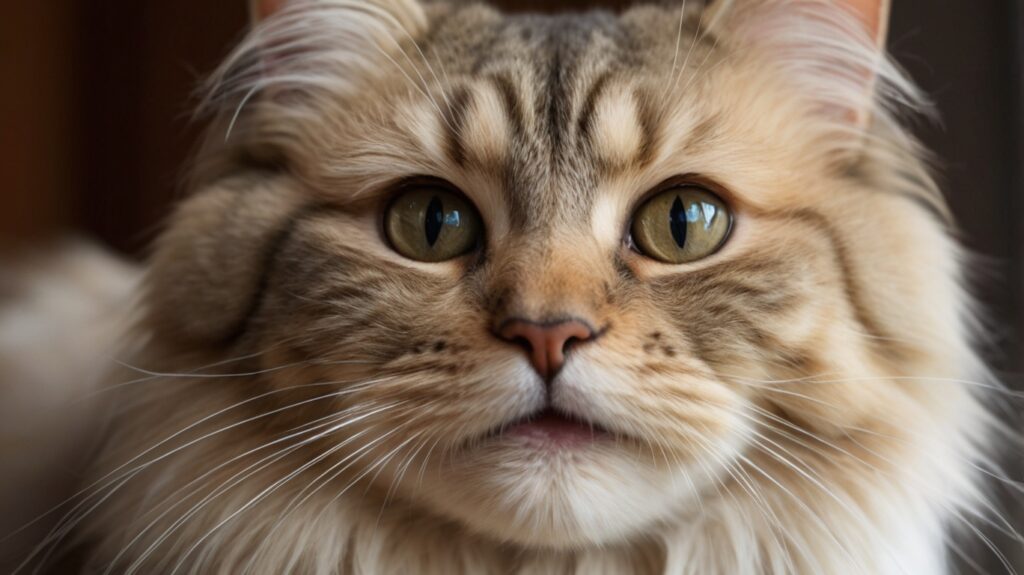Table of Contents
- Introduction
- Why Long-Haired Cats Are Prone to Hairballs
- The Science Behind Hairball Formation
- Essential Grooming Techniques for Hairball Prevention
- Dietary Solutions to Reduce Hairballs
- Expert-Recommended Hairball Remedies
- Common Myths About Hairballs in Cats
- Conclusion
- Frequently Asked Questions (FAQs)
Introduction
Hairball prevention in long-haired cats is a common concern for pet owners. These elegant felines are more prone to hairballs due to their dense fur, which they ingest during grooming. Left unchecked, hairballs can lead to digestive discomfort, vomiting, and even intestinal blockages.
This guide provides science-backed strategies to minimize hairballs, ensuring your cat stays healthy and comfortable. Whether you’re a new cat owner or a seasoned pet parent, these expert-approved tips will help you manage and prevent hairballs effectively.

Why Long-Haired Cats Are Prone to Hairballs
Long-haired breeds like Persians, Maine Coons, and Ragdolls have thicker, longer fur, which increases the likelihood of hair ingestion. When cats groom themselves, their barbed tongues trap loose hair, which they swallow. While short-haired cats can usually pass hair naturally, long-haired cats often struggle, leading to hairball formation.
Key factors contributing to hairballs:
✔ Excessive grooming (stress or boredom can increase licking)
✔ Seasonal shedding (more fur = more hairballs)
✔ Poor digestion (lack of fiber or hydration slows hair passage)
The Science Behind Hairball Formation
Hairballs (technically called trichobezoars) form when ingested hair accumulates in the stomach instead of passing through the digestive tract. Normally, small amounts of hair exit via feces, but larger masses can’t move easily, causing cats to vomit them up.
How it happens:
- Cat licks fur, swallowing loose hair.
- Hair binds with stomach contents.
- If too large, the hairball triggers regurgitation.
Risk factors:
- Dehydration (dry food diets may worsen the issue)
- Lack of exercise (slows digestion)
- Underlying health issues (e.g., inflammatory bowel disease)
Essential Grooming Techniques for Hairball Prevention
Regular grooming is the #1 defense against hairballs. Here’s how to do it right:
1. Daily Brushing
- Use a slicker brush or de-shedding tool to remove loose fur.
- Focus on areas prone to matting (belly, tail, behind ears).
2. Bathing (When Necessary)
- Some long-haired cats benefit from monthly baths with cat-safe shampoo.
- Helps loosen dead hair before it’s ingested.
3. Professional Grooming
- Consider lion cuts for extremely thick-coated cats in summer.
- Helps reduce shedding and hair ingestion.
Dietary Solutions to Reduce Hairballs
1. High-Fiber Cat Food
- Fiber helps move hair through the digestive system.
- Look for psyllium husk, pumpkin, or beet pulp in ingredients.
2. Hairball Control Formulas
- Brands like Hill’s Science Diet and Royal Canin offer specialized hairball kibble.
3. Hydration Boosters
- Wet food adds moisture, aiding digestion.
- Provide a cat water fountain to encourage drinking.
4. Natural Remedies
- Petroleum-based laxatives (e.g., Laxatone) help lubricate the digestive tract.
- Malt paste encourages hair passage.
Expert-Recommended Hairball Remedies
Veterinarians suggest:
✔ Regular vet check-ups (rule out underlying issues)
✔ Interactive toys (reduce stress-related grooming)
✔ Probiotics (improve gut health for better digestion)
Common Myths About Hairballs in Cats
❌ “Hairballs are normal and harmless.”
- Frequent hairballs may indicate a health problem.
❌ “Shaving my cat will prevent hairballs.”
- Shaving can cause stress and skin issues; brushing is better.
❌ “Only long-haired cats get hairballs.”
- Short-haired cats can also develop them, especially if they overgroom.
Conclusion
Hairball prevention in long-haired cats requires a multi-faceted approach:
✔ Daily grooming to minimize swallowed fur.
✔ High-fiber, hydrating diets to aid digestion.
✔ Vet-approved supplements if needed.
By following these steps, you can significantly reduce hairballs and keep your feline friend comfortable. If problems persist, consult a veterinarian to rule out serious conditions.
Frequently Asked Questions (FAQs)
1. How often should I brush my long-haired cat?
- Daily brushing is ideal, especially during shedding seasons.
2. Are hairball treats effective?
- Yes, treats with fiber or lubricants can help, but they shouldn’t replace brushing.
3. Can hairballs be dangerous?
- In rare cases, large hairballs can cause intestinal blockages, requiring surgery.
4. Should I give my cat olive oil for hairballs?
- Small amounts can help, but consult your vet first.
5. Do hairball prevention collars work?
- No scientific evidence supports their effectiveness; grooming and diet are better solutions.
